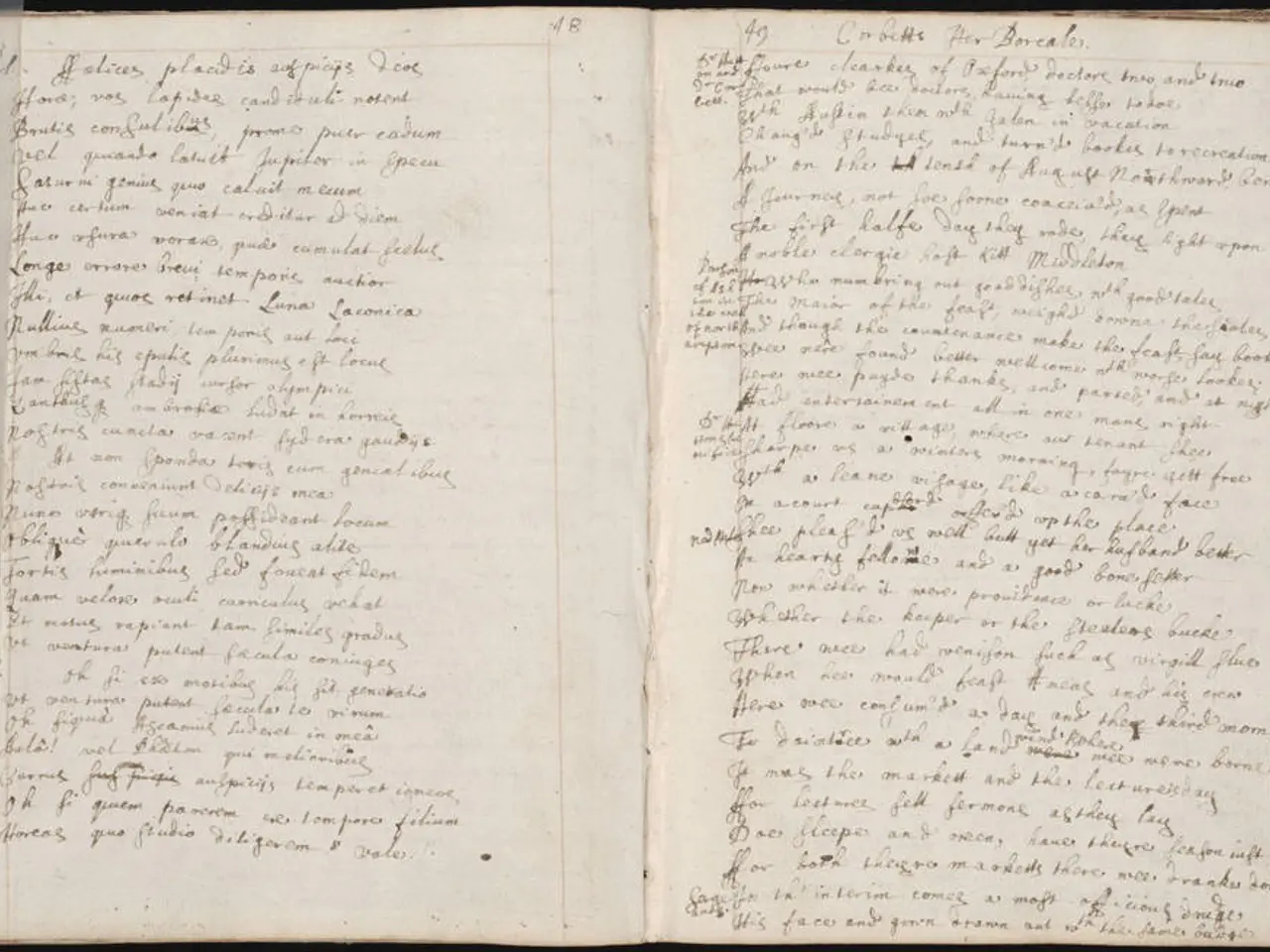Guidelines for Referencing and Citing: Explanation and Examples According to the AMA Style
In the realm of academic writing, especially in the medical and health sciences, the AMA Manual of Style serves as a comprehensive guide for authors preparing manuscripts for publication. This authoritative set of guidelines, formally known as the AMA Manual of Style: A Guide for Authors and Editors, was first published in 1962 and is currently in its 11th edition.
The AMA Manual of Style aims to standardize writing and citation in medical academic writing to ensure accuracy and credibility. It provides detailed rules for citing various sources, with particular attention to author formatting, capitalization, and punctuation norms specific to the AMA style.
The primary purpose of the AMA Manual of Style is to standardize the presentation of research, including manuscript organization, reference lists, punctuation, and abbreviations. Proper citation not only demonstrates scholarly credibility but also allows readers to verify sources and build upon research.
When it comes to in-text citations, the AMA format is unique. For books with up to six authors, list all authors' names separated by commas. For books with seven or more authors, list the first three authors, followed by "et al." When more than two references appear at one given place, hyphens are used for ranges, while commas, without space, separate multiple non-continuous citations.
The AMA citation style also governs the overall structure and presentation of academic work in the medical and health sciences. It emphasizes clarity, consistency, and professionalism, aiming to present research logically to facilitate reader comprehension and meet publication standards in medical journals like JAMA.
The AMA Manual of Style covers essential elements of scholarly communication, including punctuation, grammar, research reporting standards, and citation practices. For conference presentations or abstracts, the citation format is: Author. Title of presentation. Paper presented at: Name of Conference; Date; Location.
In addition to the traditional manual, digital tools like EndNote, RefWorks, Zotero, Mendeley, and even AI Citation Tools can automate AMA citation formatting, insert superscript citations, and generate reference lists, making the process more efficient for researchers, students, and professionals in the health sciences.
Understanding the AMA style is essential for anyone involved in the communication of research findings in the medical community. By adhering to the AMA Manual of Style, authors can ensure their work is presented in a clear, consistent, and professional manner, ultimately aiding in the dissemination and advancement of knowledge in the medical and health sciences.
[1] American Medical Association. (2020). AMA Manual of Style: A Guide for Authors and Editors. 11th edition. Oxford University Press. [2] American Medical Association. (2020). AMA Manual of Style Online. Accessed from https://www.amanet.org/ama-manual-of-style/ [3] American Medical Association. (2020). AMA Manual of Style Quick Guide. Accessed from https://www.amanet.org/ama-manual-of-style/quick-guide/ [5] American Medical Association. (2020). AMA Manual of Style: A Guide for Authors and Editors – Frequently Asked Questions. Accessed from https://www.amanet.org/ama-manual-of-style/faq/
- To enhance academic writing, particularly in the medical and health sciences, consider the use of academic translation services and language editing tools to ensure precision and credibility.
- In learning academic writing, the AMA Manual of Style serves as a valuable resource, offering guidelines on citation, writing, and presentation.
- For efficient citation creation, utilize a citation generator such as EndNote, RefWorks, Zotero, Mendeley, or AI Citation Tools to format citations according to the AMA style.
- To develop skills in various domains, explore education-and-self-development platforms offering courses on writing, investing, business, technology, health-and-wellness, lifestyle, and science.
- When crafting a manuscript in the medical field, adopting the principles of writing support, submission readiness, and academic writing can improve the quality and opportunities for publication.
- For professionals in fields like finance, business, or entertainment, understanding the AMA style can aid in creating clear, concise, and credible reports or manuscripts.
- In the field of technology, several software tools cater to the needs of researchers, students, and professionals, such as academic translation, language editing, citation generators, and writing tools.
- In the pursuit of knowledge, it's crucial to share research findings effectively; adhering to the AMA Manual of Style promotes clarity, consistency, and professionalism in the medical and health sciences community.




